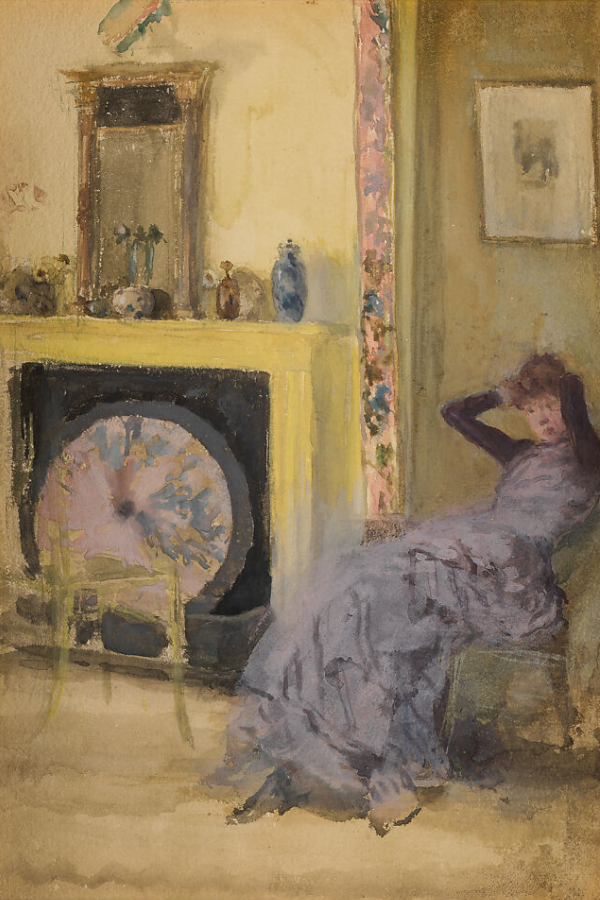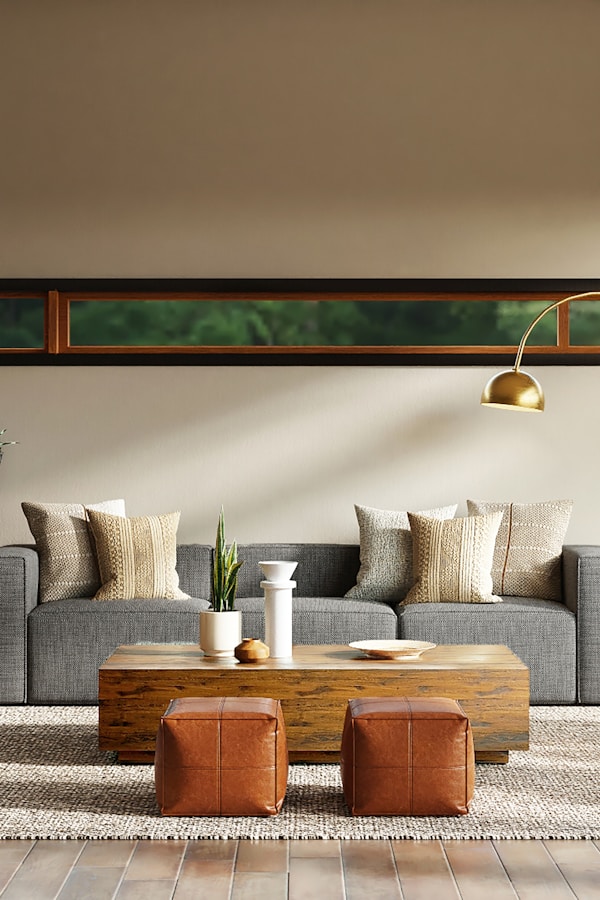
7 Real-World Secrets to Scaling a Design Firm (Without Losing Your Soul)
Summary
Kate O’Hara, CEO and Creative Director of O’Hara Interiors, shares how she scaled a multi-city design firm while preserving her brand’s creative soul. From defining a clear design perspective to time-blocking like a CEO, Kate reveals the mindset and systems that keep her business intentional, human-centered, and creatively thriving. Her story is a masterclass in blending legacy with innovation—and doing it all without burning out.
Reflection Questions
What perspective or throughline ties your body of work together—and would your portfolio reflect that to a new client?
Where in your schedule are you reacting rather than leading? How could intentional time-blocking shift that?
What responsibilities are you still holding onto that might be better delegated to help your team (and business) grow?
Journal Prompt
Imagine it’s three years from now, and your design firm has grown significantly. What does your day-to-day look like? Who’s on your team? What have you let go of—and what are you finally making time for? Write a snapshot of that future and what would need to change today to make it real.
In our industry, growth often comes with compromise: brand dilution, creative burnout, or the struggle to maintain team cohesion. But for Kate O’Hara, CEO and Creative Director of O’Hara Interiors, scaling has meant something else entirely: a deliberate evolution grounded in legacy, intentionality, and vision.
With studios in Minneapolis, Austin, and Dallas, and a newly launched rug line under Faye Belle Rugs, O’Hara is reshaping what it means to lead a multi-city design practice without losing the creative juice that fueled it in the beginning. In this episode of The DesignDash Podcast, co-hosts Laura Umansky and Melissa Grove sit down with O’Hara to unpack her story behind building a firm that grows in both scale and soul.
Plus, enjoy gorgeous photos of some of Kate and her team’s stunning design projects!
About Kate O’Hara
Kate O’Hara didn’t set out to inherit a design firm; she grew into it, shaped it, and transformed it. As the CEO and Creative Director of O’Hara Interiors, Kate now leads a nationally recognized design business with studios in Minneapolis, Austin, and Dallas. But her journey didn’t begin with a formal design degree or a dream of following in anyone’s footsteps.
“My mom started the firm,” Kate shares, “and she had a pretty strong perspective—she’s from the South, but she was living in the North. She wanted to bring that sense of Southern hospitality to any design she touched, but she also really wanted to stay versatile.”
Creating Brand Clarity
Kate’s mother, Martha O’Hara, built the business with an eye for elegance and warmth, attracting a clientele that valued custom, lived-in luxury. But as the firm grew, so did the need for brand clarity. That’s where Kate’s vision took root—not in the design studio at first, but in the photo studio.
“Every photo shoot became a conversation about why we were choosing to document one project versus another,” Kate explains. “It wasn’t always the biggest project or the easiest client. It was about what best reflected our perspective.”
Scaling Without Compromise
That perspective—client-centric yet unmistakably branded—has become O’Hara Interiors’ secret to scaling. Today, the firm balances dozens of projects across the country, maintains a highly collaborative team culture, and even operates a rug line, Faye Belle Rugs, co-founded by Kate to solve a sourcing pain point she encountered firsthand. “We just couldn’t find what we needed. So I said, let’s make it ourselves.”
Fuel your creative fire & be a part of a supportive community that values how you love to live.
subscribe to our newsletter
*please check your Spam folder for the latest DesignDash Magazine
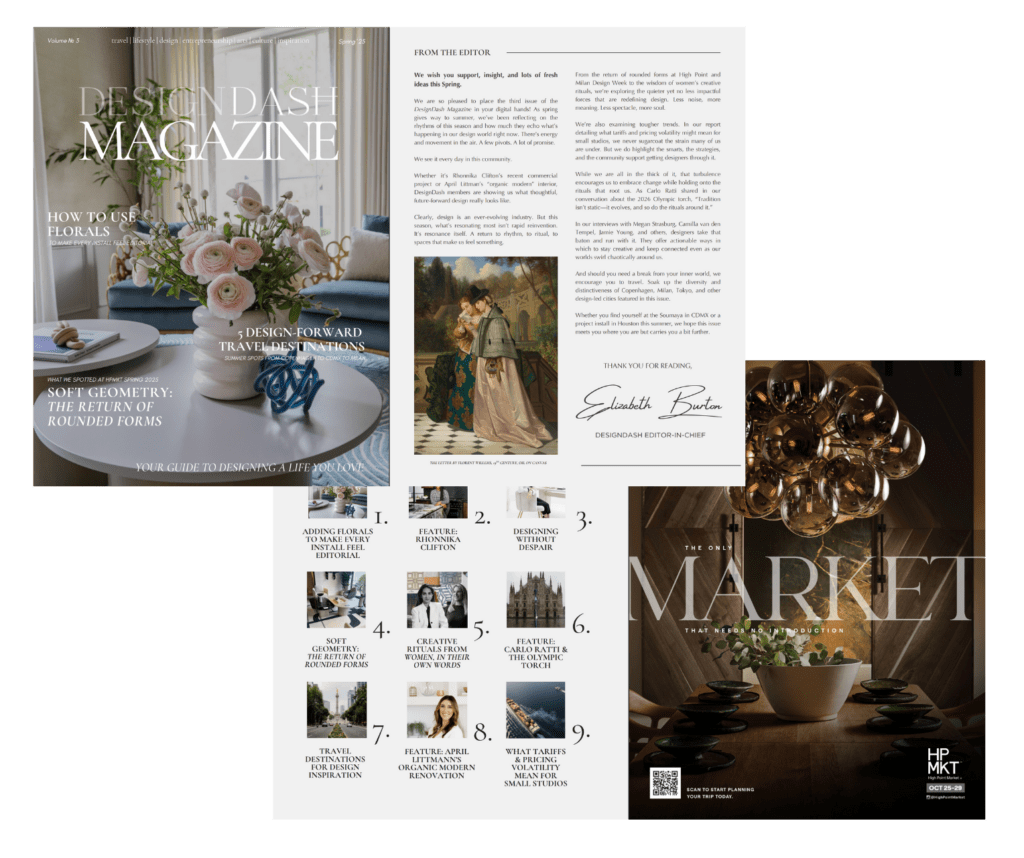
Creative Vision, Business Backbone
It’s this same problem-solving mindset that has allowed Kate to evolve O’Hara Interiors from a boutique family firm into a multi-city powerhouse. But she hasn’t lost sight of the personal touch. “It’s not just because I have a great process and buying power; it’s because we actually have a very specific set of skills and artistic perspectives.”
Kate’s path may have started with legacy, but she’s proving that inheritance and innovation can coexist. Her leadership style—equal parts visionary and practical—has shaped not just the trajectory of her firm, but also the lives of the 30+ team members who bring its brand to life across studios, time zones, and client dreams.
Culture, Clarity, and the Long Game
From leading creative reviews to blocking out time for quiet strategy, Kate balances structure with flexibility—and expects the same from her team. “We all pitch in,” she says, “but we’re also clear about who’s responsible for what. That’s what keeps things flowing.”
It’s no wonder she’s become a sought-after speaker in the design industry, known not just for her business acumen but for her ability to build a culture where creativity and clarity thrive side by side.
7 Real-World Secrets to Scaling a Design Firm (Without Losing Your Soul)
#1 Define Your Design Perspective Before You Grow
“If you’re designing for everyone, you’re giving up your agency.”
Before systems, processes, or hiring sprees, scaling starts with one essential ingredient: clarity of perspective. As Kate O’Hara explains, you can’t grow with intention if your team doesn’t know what you stand for creatively. “Every photo shoot became a conversation about why we were choosing to document one project versus another,” she says. “It wasn’t always the biggest project or the easiest client. It was about what best reflected our perspective.”
That clarity didn’t come from a rigid style guide; rather, it developed during years of intentional conversations across her growing team. Even though O’Hara Interiors is client-centric and takes on a wide range of aesthetics, Kate insists there’s still a throughline in the work.
“Our perspective is to take our clients’ best selves and bring that to life in their home,” she says. “But there also needs to be a clear common thread… Our clients are coming to us not just because we can do anything, but because we bring something specific.”
In other words, your unique creative DNA is your growth strategy. Without it, your portfolio risks looking scattered, your team flounders without direction, and your marketing loses perspective.
Kate puts it bluntly:
“It’s a trap some designers fall into—to say, ‘we design for anyone.’ You’re actually giving away your agency as a creative to say that. Clients hire us not just because we have a great process and buying power—it’s because we have a very specific set of skills and artistic perspectives.”
That vision gets codified into O’Hara Interiors’ internal brand book, which they use as to define not just the brand but also the ideal client and their values. It’s the north star for project selection, team decision-making, and even marketing strategy.
“When you grow,” Kate says, “you need to make sure every client still has the most personalized experience possible. And that only works if your whole team understands the ‘why’ behind your work.”
#2 Curate Your Portfolio Like a Brand, Not a Scrapbook
“We don’t shoot every project—only the ones that reflect who we are.”
One of the most difficult decisions for scaling design firms is deciding what not to share.
While it might be tempting to post every beautifully completed space, Kate O’Hara argues that a portfolio isn’t just a gallery of past work; rather, it’s a strategic expression of your brand perspective. That means being discerning.
“Every photo shoot became a conversation about why we were choosing to document one project versus another,” she says. “It wasn’t always the biggest project or the easiest client. It was about what best reflected our perspective.”
Even in a client-centric firm that adapts to a wide range of aesthetics, Kate emphasizes the need for cohesion.
“Our perspective is to take our clients’ best selves and bring that to life in their home,” she explains. “But there also needs to be a clear common thread… Our clients are coming to us not just because we can do anything, but because we bring something specific.”
In other words, if your portfolio reads like a Pinterest board with no connective tissue, you risk confusing your audience and weakening your brand.
Both Kate and the DesignDash hosts agreed: when you’re designing in many styles and locations, intentional curation is even more critical. Melissa put it best when she said, “If we were to shoot and share everything, our portfolio would look schizophrenic.”
“It can look messy,” Kate adds. “Especially when you’re doing client-centric design, which means you’re working with wildly different priorities, locations, and architectural styles. You need to reflect that range—but you also need to reflect your perspective.”
That’s why O’Hara Interiors doesn’t just have a brand style guide; they have an internal brand book that defines their client archetype, their creative values, and their criteria for project selection.
“We work with so many different clients,” Kate says, “but we do know who we tend to attract—and who tends to be that perfect fit for our services.”
Remember, your portfolio is a brand tool, not a personal archive. Curate it with the same precision you’d use in a design presentation. Show what reflects your point of view—not just what looks pretty.
Fuel your creative fire, thrive with support from peers, & make 2025 your firm’s best year yet!
JOIN THE DESIGNDASH COMMUNITY
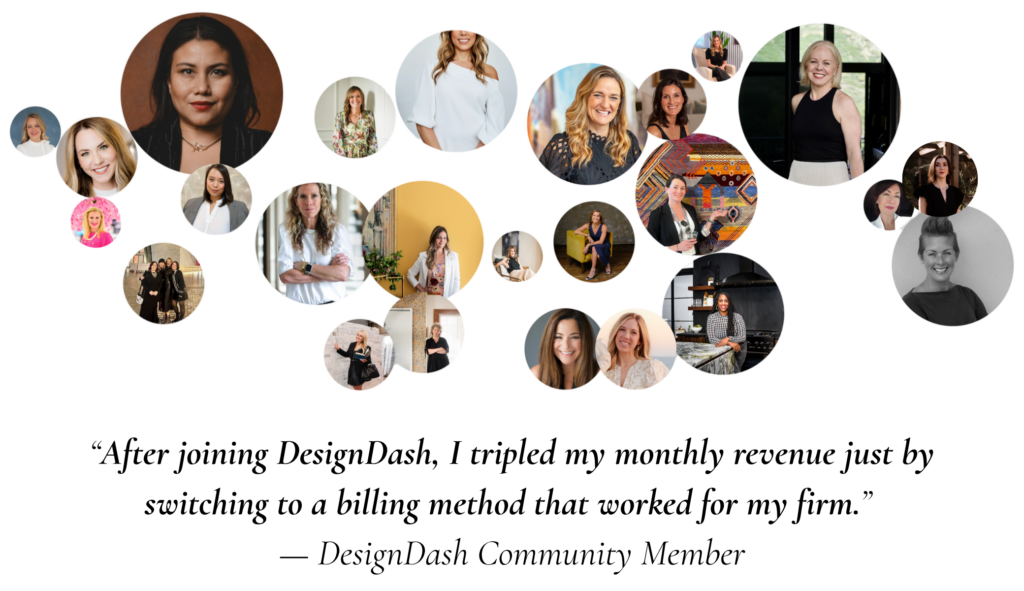
#3 Build a Team That Thinks Together—Not Just Works Together
“We’ve adopted a culture of solving problems—not pointing fingers.”
Scaling isn’t just about more hands on deck—it’s about how those hands work together. At O’Hara Interiors, team dynamics are built on trust, communication, and shared problem-solving. With three studios in different cities, clarity is non-negotiable. “When you’re managing multiple offices, it just becomes more important to have a lot of clarity—about who we are, who we serve, how we connect, and what our roles are,” Kate says.
That doesn’t mean rigidity. In fact, the team’s strength lies in balancing structure with grace. Everyone pitches in—Kate included—but there’s no confusion about who’s responsible for what. “We’re very much a pitch-in-and-help-out kind of firm,” she explains. “But we’re also clear about who owns what. That’s what keeps everything flowing.”
And when things do go sideways—as they inevitably will—Kate doesn’t reach for blame. She looks for patterns.
“Something goofy happens probably every week,” she laughs. “But we’ve learned to treat those as opportunities. If there’s a pattern of problems, that’s when a process needs to be refined or developed.”
In Kate’s world, team maturity is less about perfection and more about how you show up when things get messy.
#4 Scale With Systems—and Soul
“Organic doesn’t mean unintentional.”
Processes at O’Hara Interiors didn’t appear overnight—they emerged out of necessity. As the firm expanded, so did the need for clarity, consistency, and space to think big. “The firm wasn’t originally process-driven,” Kate admits. “But at a certain point, you realize—this could go badly if people don’t understand what the next step is.”
Rather than seeing structure as a constraint, Kate sees it as the foundation of freedom. Systems make excellence repeatable and creativity sustainable.
“When you’re excited about something, that’s great,” she says. “But I’ve had to learn to ask: do I have a team that can carry it through and maintain it?”
Her calendar now reflects that balance. Time is blocked not just for meetings, but for quiet thinking, team check-ins, and big-picture planning. “You can wait for things to evolve organically and still be intentional about it,” she says. “Structure protects your energy—it doesn’t stifle it.”
In short: process isn’t the opposite of passion. It’s what empowers that passion to produce.
#5 Time-Block Like a CEO, Not Just a Creative
As the leader of a multi-city design firm, a rug company, and a growing national team, Kate O’Hara’s calendar could easily become a swirl of back-to-back meetings, last-minute requests, and creative chaos. But instead of letting her time be dictated by urgency, she took a hard look at where her energy was actually needed.
“I got brutally honest about where my time needed to go—and where I wanted it to go.”
That honesty led to a structure Kate now relies on: intentional time-blocking. She carves out windows for meetings with different departments, builds in recurring strategy sessions, and protects space for creativity and big-picture thinking. Her calendar reflects not just priorities—but purpose.
It’s not about rigid scheduling. It’s about designing her day like she’d design a space: with flow, function, and beauty. That also means giving herself margin—time for “unscheduled time”—to allow space for vision to emerge.
“I’ve had to be that way because I travel a lot. Without that structure, it would feel really chaotic—and I wouldn’t enjoy that very much.”
The impact of this approach extends beyond Kate. Her time-blocked rhythm sets expectations for the entire team: communication has a cadence, strategy has a home, and creativity has breathing room. It’s how she scales a firm and a brand—without burning out.
#6 Let Go to Level Up
One of the hardest parts of growth is letting go.
For Kate, expanding O’Hara Interiors wasn’t just about hiring talent—it was about building trust and releasing control. Not everything can or should funnel through the founder, and she’s learned to design roles and systems that let others thrive.
“There has to be a willingness to pass the baton.”
That starts with clarity. Kate is often the spark behind a new idea, but she’s realistic about her bandwidth. Before launching something new, she now asks: Who’s going to carry this forward once I get it started? If no one on the team feels ownership, the idea probably isn’t ready or necessary.
This shift has been key to the firm’s sustainability. With 30+ team members across multiple locations, delegation isn’t a nice-to-have—it’s the only way the business works. Kate surrounds herself with strong leads, empowers them to own their departments, and encourages cross-functional collaboration rooted in clarity, not chaos.
“No matter how great anyone is at anything, we all prioritize the things we enjoy. So if someone’s avoiding the thing I thought would be great—it’s probably not a fit.”
Letting go isn’t about stepping out; instead, it’s about stepping aside so your team can step up.
Design Your Dream Firm in Just 5 Days
JOIN THE CHAOS TO CLARITY CHALLENGE!

#7 Do It Imperfectly—But Intentionally
If you’re waiting to feel totally ready before launching a process, a project, or a business idea, Kate has news for you: you’ll be waiting forever.
“We haven’t been doing things the way we do them today forever. Some of it we started last week.”
Scaling a creative firm is never a straight line. It’s full of pivots, imperfect starts, and systems that evolve over time. But Kate doesn’t let the fear of getting it “wrong” hold her back. Instead, she leads with intentionality—even if the execution isn’t perfect on day one.
That might mean testing a new team structure, adjusting her travel cadence, or rolling out a brand new rug collection. Her mindset is pragmatic: move forward with clarity, adjust with feedback, and refine as you go.
“Organic doesn’t mean unintentional. You can evolve at the right time and still make sure it happens.”
This philosophy extends to her team culture too. O’Hara Interiors embraces continuous improvement—whether it’s refining a process, adding a tool, or rethinking how feedback is shared. The goal isn’t perfection. It’s momentum.
“How I react when someone tells me something I don’t want to hear? That determines whether they’ll tell me again. And that’s where growth happens.”
Want More Candid Conversations Like This?
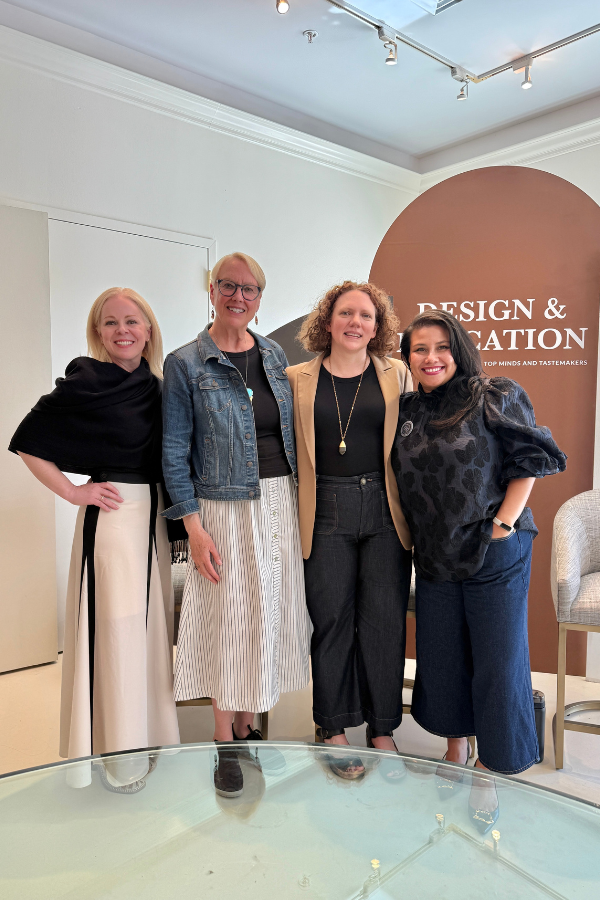
If you found Kate O’Hara’s insights as inspiring as we did, don’t miss future episodes of The DesignDash Podcast. Each week, we bring you real talk with industry leaders who are redefining what it means to grow a creative business with heart. And if you’re craving a deeper connection with like-minded designers, join the DesignDash Community, which our founders built for collaboration, mentorship, and the behind-the-scenes support that keeps your creative momentum strong.
Written by the DesignDash Editorial Team
Our contributors include experienced designers, firm owners, design writers, and other industry professionals. If you’re interested in submitting your work or collaborating, please reach out to our Editor-in-Chief at editor@designdash.com.



